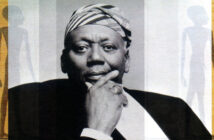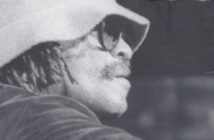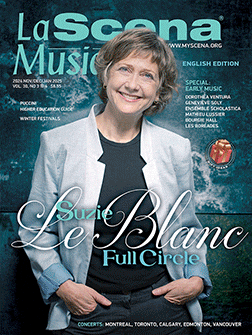
This page is also available in / Cette page est également disponible en:
![]() Francais (French)
Francais (French)
In November 2011, UNESCO issued a proclamation establishing April 30 as International Jazz Day, effective the following year. The purpose of this decision was to draw attention on an art form with a proven history and global impact. To that end, promotional efforts were encouraged and a wide variety of both educational and performance activities were organized, all of which aimed to enhance knowledge of the genre.
Jamming Globally, Playing Locally
First conceived by jazz legend Herbie Hancock (according to the website, see link below), Jazz Day is one among a series of Awareness Days created by UNESCO. Twelve years later, Hancock is still involved as its acting chair and goodwill ambassador. Every year, an All-Star Global Concert is staged: after last year’s event in Havana, Tangier, Morocco, has just been announced as the host city for 2024. What’s more, over 60 countries have listed events in and around April 30 on its platform, four of which are currently listed for Canada.
Jazz had already been given special status in the United States when, in 2002, April was declared Jazz Appreciation Month (JAM). John Edward Hasse, now curator emeritus of American Music at the Smithsonian in Washington, led this initiative, having championed the cause for a good five years prior to JAM’s inception. A jazz devotee throughout his long and distinguished career, Hasse succeeded in seeing the genre recognized more broadly. JAM was his crowning achievement. He drew inspiration from an existing model: Black History Month. Initially only Negro History Week, and lasting but seven days, it expanded to its month-long run in February of 1976, half a century after its inception. JAM is firmly entrenched in the American cultural landscape, with a wide variety of events and initiatives occurring across the country.
Though it, too, occurs in April, International Jazz Day is not the same as JAM. The two are held under the auspices of separate organizations, the former with a global reach, the latter strictly national. But they share a common purpose: that of promoting the genre, and encouraging organizers to do their part on a local level, while helping them make their activities known beyond their immediate surroundings.
For more information on JAM: www.smithsonianjazz.org
For a calendar of jazz-events on International Jazz Day: www.jazzday.com/events/
Toronto : April 30: An Evening to Remember

For over half a century, trumpeter Guido Basso was among the most appreciated musicians to grace the Toronto jazz scene. One year ago, in his 85th year, he took his last breath. Six years prior, he was honoured as a distinguished son of Montreal’s Italian community, an occasion marked in this section with a feature story. Weaned in the tradition of Clifford Brown, Miles Davis and the like, Basso’s musicianship was second to none, particularly on the flugelhorn, an instrument he played with grace and heartfelt emotion.
To salute him, several of his longtime colleagues will assemble on International Jazz Day (see feature on next page) to honour his memory. Organized by the city’s JAZZ.FM91 (CJRT-FM) station, the show will take place at the Lula Lounge, 1585 Dundas St. West, at 8 p.m. on April 30. At this writing, the details are still being worked out, but there will be two sets, featuring a core band comprised of Terry Clarke on drums, Reg Schwager on guitar, Neil Swainson on bass, John Sherwood on piano, and two trumpeters: Brian O’Kane and Chase Sanborn.
Reminiscing about the departed, Sanborn looks up to his elder with reverence. “I first met him in 1981, after coming to Toronto from San Francisco,” he says. “In fact, he was one of the reasons Toronto was on my radar. At that time, I had transcribed his solo on Portrait of Jenny, which I played every day for months. To this day, I view it as one the greatest flugelhorn solos ever—an opinion shared by many others.”
A trumpeter by training, Basso’s real voice was that horn, known for its mellower sound. An ever-affable gentleman who was beloved by all, Basso simply radiated his humanity through his playing. “Guido had an uncanny ability to hear and play that right note at just the right time,” Sanborn says, “and you could identify him immediately after a note or two by his inflexions. He epitomized what all instrumentalists are searching for: the ability to sing through our horn.” And to that, we say Amen!
A Tribute to Maestro Guido Basso—April 30, 8 p.m., Lula Lounge
Information and ticket purchases: www.lula.ca or JAZZ.FM91: https:/jazz.fm
For those who can’t make it down to the club, there will be a live webcast from Annette Studios featuring Lost in Transit, a guitar-bass-drums trio. To tune in, contact its drummer at [email protected].
Singing a Different Tune: Sarah Jerrom and the Magpie Suite

Every year, music fans are hopeful that they will experience as many bright moments of music-making as possible, be it live or off-the-record. In our times—so saturated with run-of-the-mill fare, however—they may despair, but never to the point of giving up on the prospect of coming across a couple of gems.
One early entry to fit that bill is the Magpie Suite, a double-album suite from singer Sarah Jerrom. If artistic ambition is an indicator, this release certainly qualifies. The two-disc set runs for a total of 86 minutes. The first disc is divided into five tracks, the second into three—a good half of them extending beyond the 10-minute mark. What is more, the leader has assembled a sizable cast: 17 instrumentalists, four voices (Jerrom’s included), and a conductor. Combined, they lift the charts, written and arranged by the leader, off the page. Spearheaded by a crew of heavy hitters like Mike Murley, Kirk MacDonald and Kevin Turcotte, the band also includes three classical musicians, who play flute, oboe and French horn.
Jerrom explains the project’s genesis in a recent conversation, noting that it came about in the wake of an unfortunate life experience; the trauma of a lost pregnancy. In 2018, three years later, she started working on the music during a two-week residency at the Banff Centre for the Arts. It was a long and winding road between then and the recording session, held in April of last year—pushed back a good half dozen times by the pandemic, among other things. Its planned release in the fall of last year was then postponed following an accident that sidelined her partner, bassist Rob McBride.
The work itself could be described as programmatic. Its scope is cinematic, akin to a kind of “fairytale” (her word), very much imbued with the natural setting that surrounded her at the time of its composition. On the last day of her stay, Jerrom was captivated by the raucous sounds of crows and magpies on her windowsill as she was packing up. She observed their ritualistic flights, which defied the elements, and informed her work in fresh and engaging ways.
When easing one’s way into the music, some listeners will definitely hear a connection to one of Canada’s most distinguished jazz sons on the international scene, the late trumpeter and composer Kenny Wheeler. “I won’t deny that,” Jerrom says. “In fact, the second track—Part Two: For Joy—is my dedication to him. But I relate to him in another way as well, as we are both from St. Catharines, Ont., where I am now based after having lived many years in Toronto.” In spite of that influence, she manages to assert her own personality in the proceedings, and increasingly so as the album progresses.
Enhancing the final product is a handsome booklet containing the singer’s lyrics, descriptive notes of the pieces, and a most eloquent essay by Christine Jensen, one of our country’s leading jazz composer/arrangers, to whom the singer/bandleader is very much indebted as a mentor and adviser.
On the strengths of this album—be it in her skillful compositional work or excellent delivery by the orchestra—Sarah Jerrom has surely taken an important step in her career, serving notice as a talent to watch for on the Canadian jazz scene, and hopefully for many years to come.
Listen to soundbytes of the album here.
Montreal: The Big Splurge
For its April 30 event, Montreal has chosen the jam-session route, at which time musicians young and old are invited to bring their horns and play. Organized by the Effendi label, this night-long music party will be the culmination of the three-week run of its parent festival, Jazz en Rafale. One of its artists, pianist Félix Stüssi, will direct the traffic. Within the jam session, there will be set groups, such as Stüssi’s quartet, SuperNova 4, and fellow pianist François Bourassa’s foursome, who will play a set of their own (Lion d’Or, 8 p.m.).

This evening will top off a whole month of jazz performances in town, held under a joint arrangement between Effendi and Odd Sound Records, the other thriving local jazz label. Also on the bill is the city’s leading jazz big band, the Orchestre national de jazz de Montréal, who will kick things off on Wed. April 10 with a première—Shades of Bowie, a commissioned work by saxophonist and composer Philippe Côté. Included in the lineup is a star soloist, tenor saxophonist Donny McCaslin from New York. Côté has drawn inspiration from collaborations between McCaslin and the late David Bowie in the latter’s final album Blackstar, issued after his death in 2016. The composer does not cover any of the pop icon’s music, but rather draws loose inspiration from it and creates something entirely different (Cinquième Salle, 7:30 p.m.).
Effendi, for its part, has slated two of its lynchpin bands—the eight-piece Jazzlab Orchestra (now in its 20th year) on Wed. 17, followed by the Auguste Quartet for its 25th anniversary (Sat. 27), led by the label boss and bassist Alain Bédard, also part of the larger unit. New music will be played in both cases, with pieces written specially for Jazzlab by Bourassa and fellow pianist Gentiane Michaud-Gagnon, and Bédard presenting the repertoire for the next recording of his own quartet (Jazzlab: Salle du Gesù, 7:30 p.m. / Auguste Quartet: Maison de la culture du Plateau-Mont-Royal, 7:30 p.m.).
Aside from McCaslin, a few out-of-towners will drop in during the month, one being the Turin-based tenor player Fulvio Albano (who will sit in with the Jazzlab Orchestra), and from Poland the JAH Trio, who will make their North American debut at O Patro Vys (Fr. 12, 8 p.m.). Trumpeter Jacques Kuba Séguin, the mastermind behind the trio’s Montreal appearance, will also be heard that evening in a new band called F S le P, short for Fanfare sous les Pommiers. His label, Odd Sound, will launch a new title at Le Dièse Onze, which will mark the debut of Nick Semenykhin, a guitarist studying currently in New York (Wed. 24).

Returning to O Patro Vys, the world-travelling Montreal trumpeter Rachel Therrien will take a more experimental tangent than usual in a project called Capi, which pairs live electronics with spoken word, based on verses penned by her grandfather (Sat. 26). On something of a lady’s night, Therrien will split the bill with the fine acoustic post-free-bop co-op quartet, Bellbird, fronted by the twin reedists Claire Devlin and Allison Burik, backed by drummer Milli Hong and bassist Eli Davidovici.
Another event to note is Bourassa’s performance of a Jazz Mass on Sun.14 at 11 a.m. at the Salle du Gesù. He will revisit pieces he wrote back in 1987, played by him on both piano and organ, with his bass and drum mates in tow.
For added info, ticket purchases and the like, go to: www.oddsoundmusique.com
Playlist https://www.youtube.com/watch?v=auqdQzSexdE
Also online: Something Old, Something New—Two recent concerts in Montreal.
This page is also available in / Cette page est également disponible en:
![]() Francais (French)
Francais (French)











